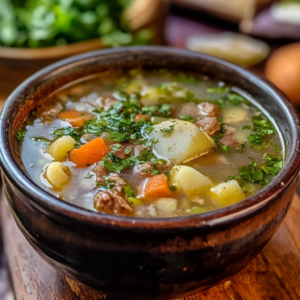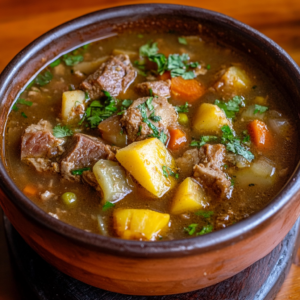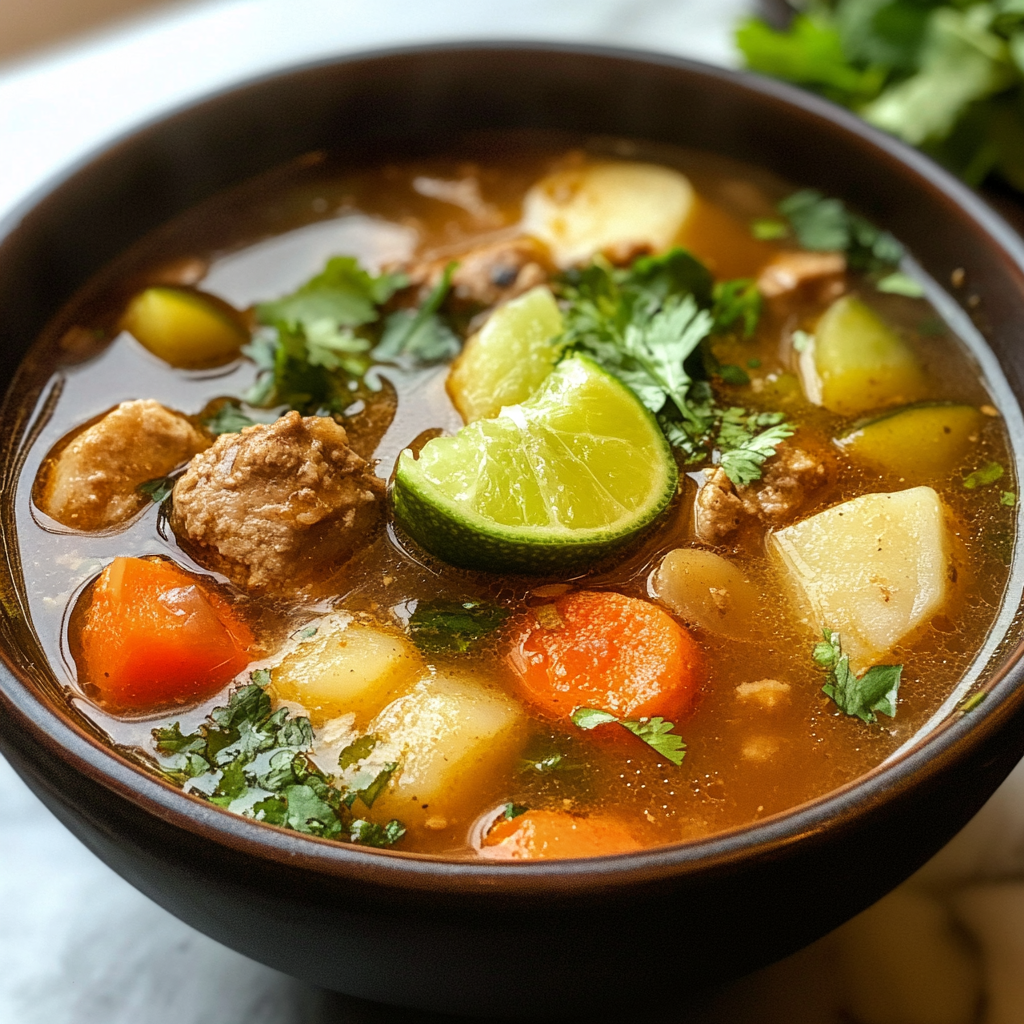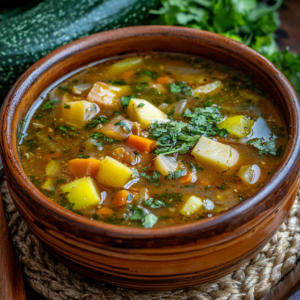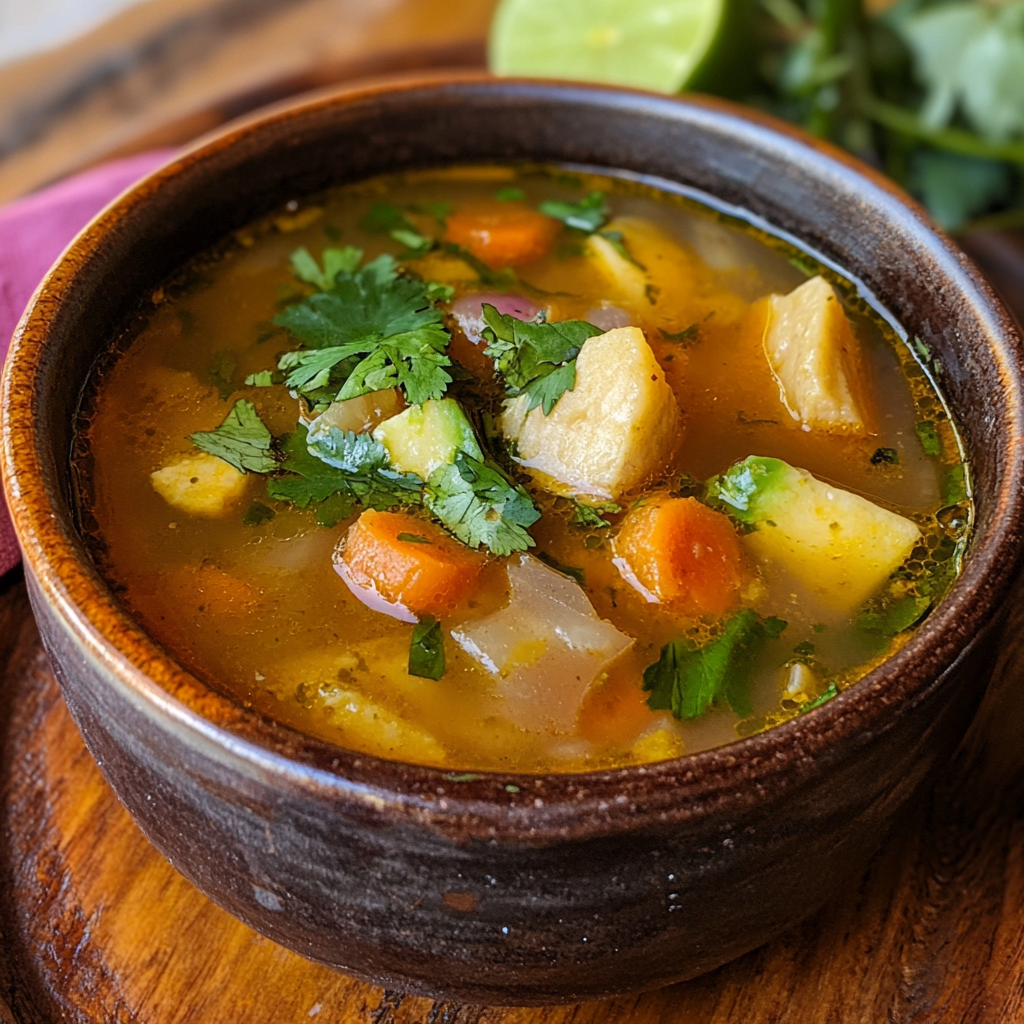Caldo de Res also represents Mexican culinary tradition, particularly in rural areas where families gather to enjoy hearty meals.
Why You Should Try It
This soup offers more than just great flavor—it’s a nutritional powerhouse. The bone-in beef shank provides collagen, which supports joint health, while the vegetables offer fiber, vitamins, and minerals. In addition, the soup can be easily adapted to personal tastes. Whether you prefer a spicier version or wish to add other vegetables, this recipe is highly versatile. To explore the health benefits of bone broth, check out this resource.
Ingredients for Caldo de Res
Here’s what you’ll need to make this traditional dish:
- 2 lbs of bone-in beef shank
- 4 medium Yukon Gold potatoes, quartered
- 2 ears of corn, halved
- 2 zucchinis, sliced into rounds
- ½ head of cabbage, chopped
- 1 bunch of cilantro, finely chopped
- 4 garlic cloves, minced
- 1 onion, quartered
- 2 bay leaves
- Salt and pepper, to taste
- 1 lime, cut into wedges
The combination of these ingredients creates a rich, flavorful soup. The vegetables add texture and balance to the richness of the broth, while the beef shank ensures that each bite is deeply satisfying.
Step-by-Step Instructions for Making Caldo de Res
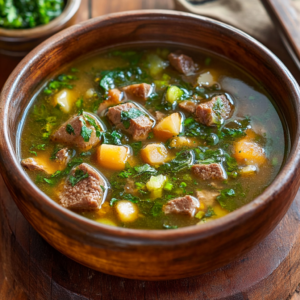
Step 1: Prepare the Broth
Begin by creating the broth, the foundation of this dish. In a large stockpot, bring water to a boil and add the bone-in beef shanks, garlic, onion, and bay leaves. Reduce the heat and simmer for at least two hours. This allows the beef shanks to release collagen and marrow into the broth, giving it that signature rich flavor. As the soup simmers, skim any foam that rises to the surface to ensure a clear broth.
Pro Tip: If time is limited, you can use an Instant Pot to speed up the cooking process.
Step 2: Add the Vegetables
Once the broth is ready, add the vegetables. Start by placing the potatoes and corn in the pot first, as they need more time to cook. After 20 minutes, toss in the zucchini and cabbage. Be sure to stir occasionally and cook the vegetables until they’re tender but not overly soft.
Adding vegetables in stages ensures that each ingredient retains its texture. No one likes mushy vegetables in their soup, so keep an eye on them during this step.
Step 3: Season and Garnish
Before serving, taste the broth and adjust the seasoning with salt and pepper. When ready to serve, ladle the soup into bowls, making sure to include a bit of everything—beef, broth, and vegetables. Garnish with freshly chopped cilantro and a squeeze of lime. The lime adds a refreshing citrusy brightness, which perfectly complements the rich broth.
Optional: For those who enjoy a bit of spice, serve the soup with sliced jalapeños or hot sauce on the side.
Serving Suggestions
You’ll want to serve Caldo de Res in large bowls, with warm corn tortillas or Mexican rice on the side. The tortillas are ideal for dipping into the broth, while the rice adds an extra layer of comfort to the dish. Alternatively, you can scoop some Mexican rice directly into the soup for a heartier meal.
If you want more texture and flavor, consider adding a few toppings, like sliced radishes or diced onions. These toppings add crunch and a touch of sharpness that pairs well with the rich broth.
Storage and Reheating Tips
- Storing: Place any leftover Caldo de Res in an airtight container in the refrigerator, where it will last for up to five days.
- Reheating: To reheat the soup, place it in a pot on the stovetop over low heat, stirring occasionally. This helps to prevent the vegetables from becoming too soft.
- Freezing: You can freeze Caldo de Res for up to three months. When you’re ready to eat it, thaw the soup in the refrigerator overnight before reheating it on the stove.
This soup tastes even better the next day as the flavors have had time to meld together, making it a perfect option for meal prepping.
Variations of Caldo de Res
While the classic version of this dish is delicious on its own, there are many variations you can try:
- Protein Substitutes: For a lighter version, swap the beef shank for chicken or pork.
- Vegetarian Option: Skip the meat entirely and double the vegetables for a hearty vegetarian soup.
- Spices: Add cumin, chili powder, or even smoked paprika to enhance the flavor profile. Don’t be afraid to experiment with spices based on your preferences.
Common Mistakes to Avoid
- Overcooking the Vegetables: Adding vegetables too early can cause them to turn mushy. Always add them in stages and monitor their cooking time to ensure they remain tender yet firm.
- Skipping the Bone-In Meat: The bone-in beef shank is crucial for creating a rich broth. The marrow and collagen released from the bones give the soup its unique depth of flavor. Without it, the broth may taste flat.
- Under-Seasoning: The soup’s flavor improves as it simmers, but be sure to taste and adjust the seasoning toward the end to ensure it’s perfectly balanced.
FAQs
Q1: What’s the best beef cut for Caldo de Res?
The ideal cut is bone-in beef shank, as it adds both meat and marrow to the broth. If you prefer a different cut, beef chuck or short ribs work well too.
Q2: Can I freeze Caldo de Res?
Yes! Caldo de Res freezes beautifully for up to three months. Just ensure the soup cools completely before transferring it to a freezer-safe container.
Q3: What vegetables can I substitute?
You can replace zucchini and corn with vegetables like green beans, carrots, or chayote. Additionally Choose vegetables that can withstand slow cooking without becoming mushy.
Q4: How can I make it spicier?
As a result, add fresh jalapeños to the soup or serve it with a side of hot sauce. You can also sprinkle in chili powder for an extra kick.
By following these steps, you’ll be able to create a delicious, authentic bowl of Caldo de Res. Whether you’re cooking for family or preparing meals for the week, this soup’s rich flavors and hearty ingredients will make it a staple in your kitchen.


